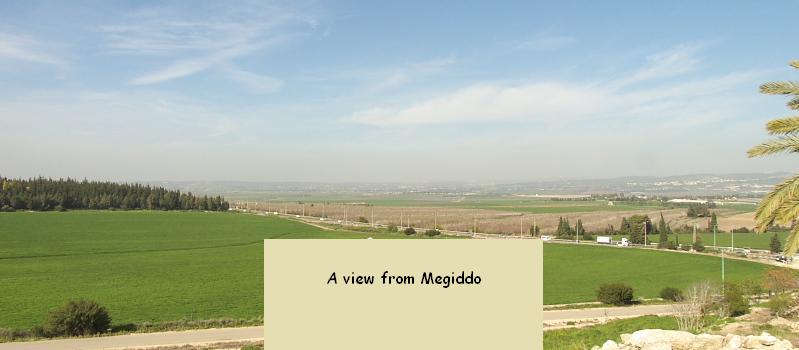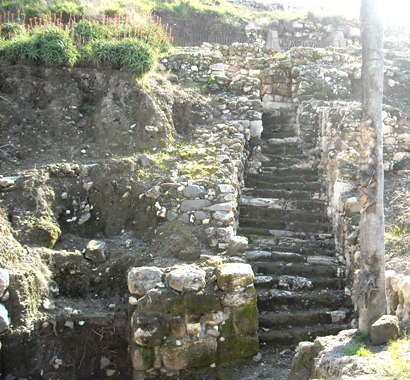
|
Megiddo had great importance in the ancient world because it guarded a narrow pass
and several trade routes. As a result, excavations have found about 26 levels of occupation by
different civilizations. One of the problems is that to excavate a lower level, archaeologists may have
to destroy some layers above it. Both the following links provide an aerial view of Megiddo showing that it is
a high mound with a flat top. They also provide further information about this site.
|

|

|

These are two different excavations at Megiddo. The one above shows a reservoir built in the Israelite period. |
|
The excavation for which Megiddo is most famous is a second, larger water system. There was a major well outside the city walls. Unfortunately it was unusable if the city was being attacked. During the time of the Israelite kings, a shaft and tunnel to the well were built so the residents could get water even when the city was under siege. Please come with us for a "hike" down the shaft and through the tunnel. |

Above: As we walk to the steps, we see some more excavated ruins on the right. Right: We start down the first flight of modern steps in a fairly open section at the top of the shaft. |

|

Off to the right, we see some of the original steps. |

Farther down the shaft is fairly closed in. |
|
Were you worried about climbing back up all those steps? You didn't need to. There is a short exit to the outside of the mound. It was originally sealed from attacking armies. |
|
The above sign shows the 120 foot deep shaft and 230 foot tunnel. "This tunnel was hewn [through bed rock] from both
ends at the same time ... and its builders were only one foot off when meeting in the middle."*
What kind of technology did they use to achieve this feat? No one knows.
|
The site also contained stables for as many as 450 horses but we are not sure that we have any pictures of them. They have been attributed to various Israelite kings including Solomon, Ahab and Jeroboam II. Some claim that instead of being stables, they may been either storehouses, marketplaces or barracks.
Return to the main page Recommended
Previous Next
Copyright 2010 James and Danielle Brink. Permission is given for non-commercial use.
Last revision: 4/1/2010